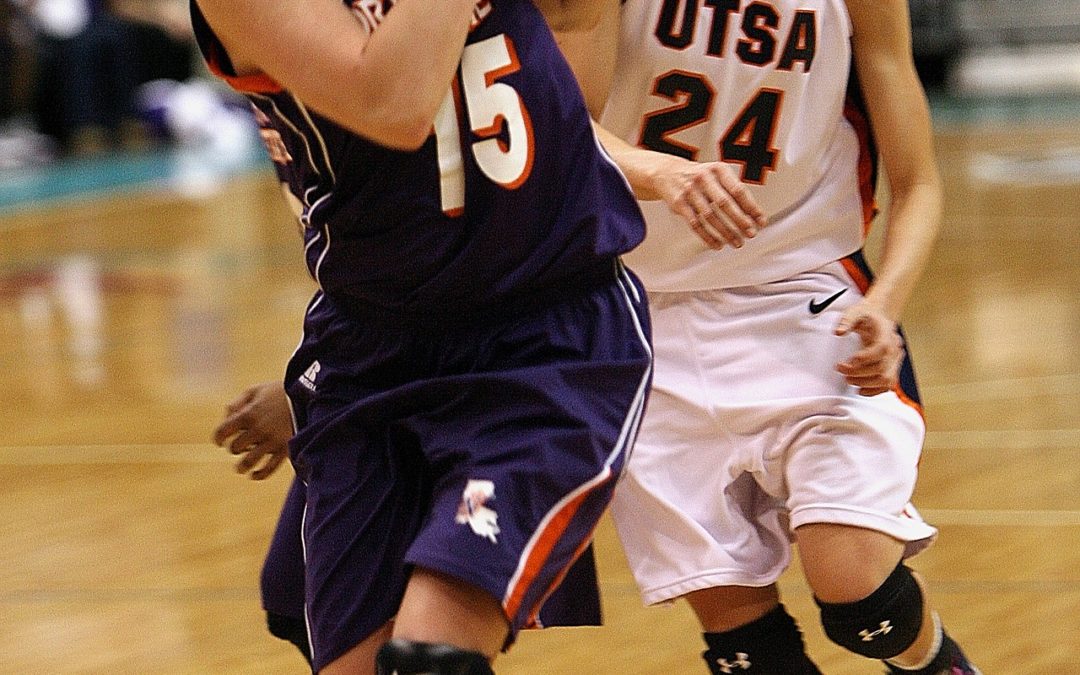Male sports stars are ubiquitous when it comes to high-paid advertisements. From products that are sports-related like sports drinks and sports equipment to seemingly random endorsements like insurance companies or pizza places, sports stars equate to big bucks.
Meanwhile, female athletes have lagged in their earning power. Megastars like Serena Williams and Naomi Osaka top the list of female athletes. Yet with 90% of their earnings coming from endorsement deals, they make in a year what a top male athlete might make just from their playing contract. Other female stars, like Simone Biles, can only earn money from endorsements. That’s because her sport, gymnastics, does not offer salaries or prize money (other than when she competed and won medals in the Olympics).
But in 2021 the tides finally seem to be changing. What is ushering in this new era of potentially higher earnings for female athletes? Surprisingly, it’s the NCAA (National Collegiate Athletic Association) rule change that is allowing student-athletes to profit from their name, image, and likeness. Read on to learn how these new rules are boosting female athletes and changing how women in sports get paid.
The “NIL” Rule Change
In June 2021, the NCAA amended its rules to allow its athletes to profit off their personas. Previously, college athletes could not monetize their success without sacrificing their amateur status. This amendment, colloquially known as the “NIL” rule change (short for name, image, and likeness), applies to all Division I athletes, both men and women.
This change has been a long time coming. Since the early 2000s, former college athletes have been seeking compensation for the use of their image. But an expected byproduct of the rule change has been a huge boon for female athletes.
How Female Athletes Are Benefitting
While most people are aware of the major earning power of professional male athletes, the same cannot be said for female athletes. For example, the median salary for NFL players in 2020 was $860,000. That skyrockets when you look at the average pay for an NBA player: $7.5 million. Now compare that to the average WNBA player salary: a paltry $120,000.
Of course, there are some very real economic reasons for these differences. However, with the new NIL rules, top female athletes are now able to sign endorsement deals earlier in their promising careers. Not only will this solidify them as public personas, increasing their long-term earning capabilities, but it is also creating a ripple effect in terms of the “bankability” of female athletes. This change means we are likely to see player salaries increase over the next several years, as well.
Top Female College Athletes Signing Huge Deals
Perhaps the biggest star to rise since the NIL rule change is UConn women’s basketball player Paige Bueckers. Bueckers, a sophomore, became the first college athlete to sign with the powerhouse sports drink brand Gatorade. Between the Gatorade deal and another with e-commerce platform StockX, Buecker is expected to earn over $1 million in endorsement deals during her college career.
Two more female college basketball players, twins Haley and Hanna Cavinder, have also inked big deals. Hours after the NIL rule change took effect, the sisters signed a deal with cellphone provider Boost Mobile.
The Impact of NIL On Female Athletes in the Future
The impact of the NIL rule change will benefit female athletes in two major ways moving forward. First, it will allow female athletes to compete in college when they might otherwise skip it. Additionally, it will set female student-athletes up to increase their long-term earning power and improve their business strategies.
Creating a Space for Collegiate Competition
The best example of a female sports star benefitting from these new rules to attend college is Olympic gymnastics gold medalist Suni Lee. While Lee earned money from the American Olympic Committee for her 2020 medal haul, she did not earn a salary or winnings for her gymnastics career. However, her star power and earning capabilities are right now at their highest following her international achievements.
Before the rule change, Lee would have had to choose between lucrative endorsement opportunities and the chance to attend college and compete for her school. And particularly for Lee, who competes in a sport with no professional league to compete in after college, her highest earning potential exists now and in the next few years.
Moving the Needle for Higher Pay for Female Athletes
As female collegiate athletes sign high visibility endorsement deals, they will start moving the needle on professional women’s sports salaries. The market will have to adjust to meet the demand for and familiarity with these athletes. For example, as college basketball stars sign deals that make them familiar to the public, it will increase their earning power in whatever WNBA city they eventually play in professionally. Endorsement and television deals will increase in value, dragging league salaries up, as well. Additionally, student-athletes will have access to agents and marketing teams much earlier in their careers, setting them up for long-term financial success and stability.
The new NIL rules give female athletes more freedom and flexibility in controlling their careers and income, starting in their college careers. The points addressed in this article are just some examples of how this new rule change will benefit females in athletics now and in the future.

